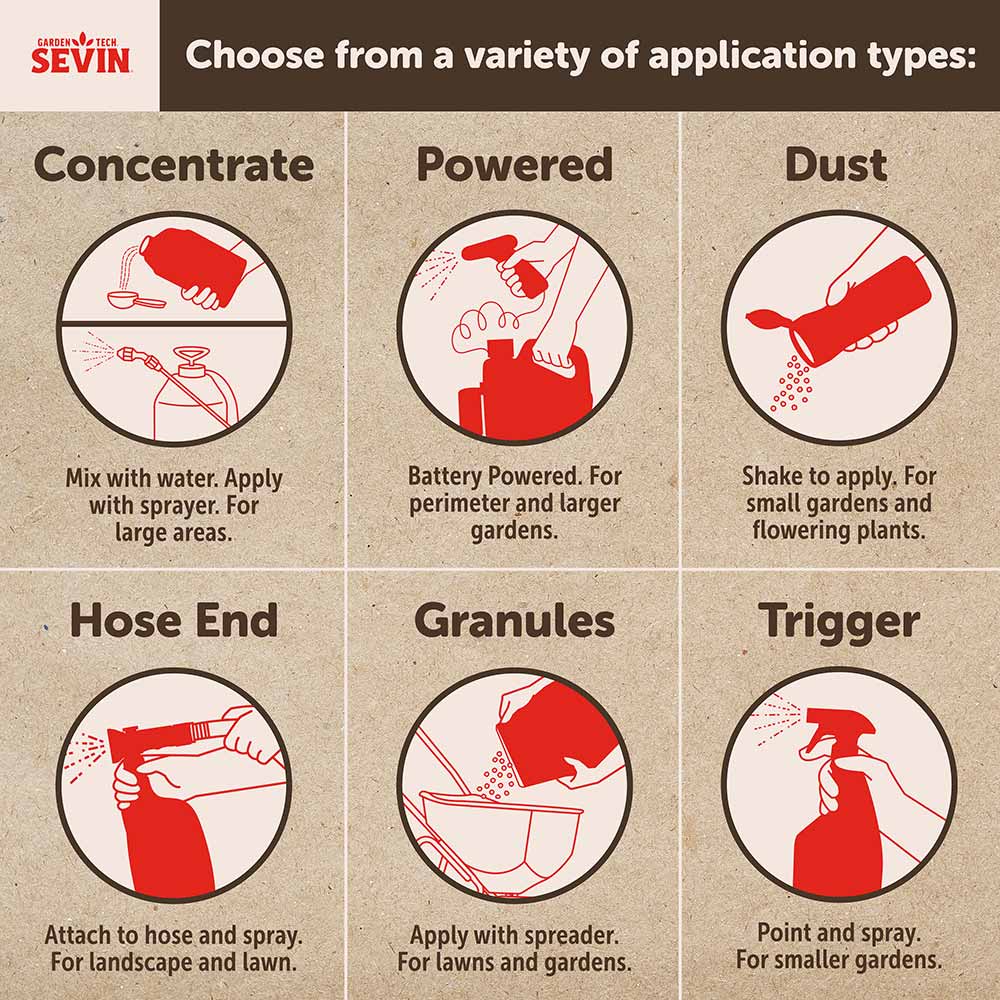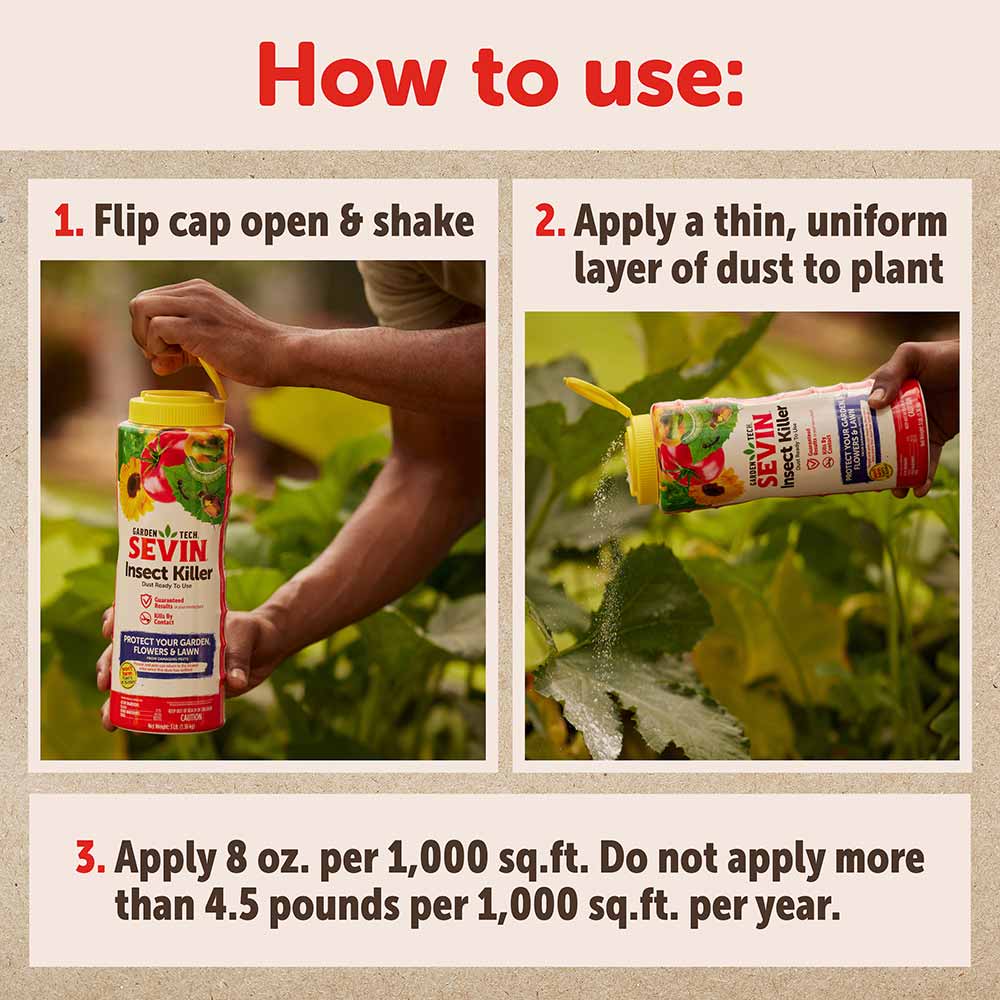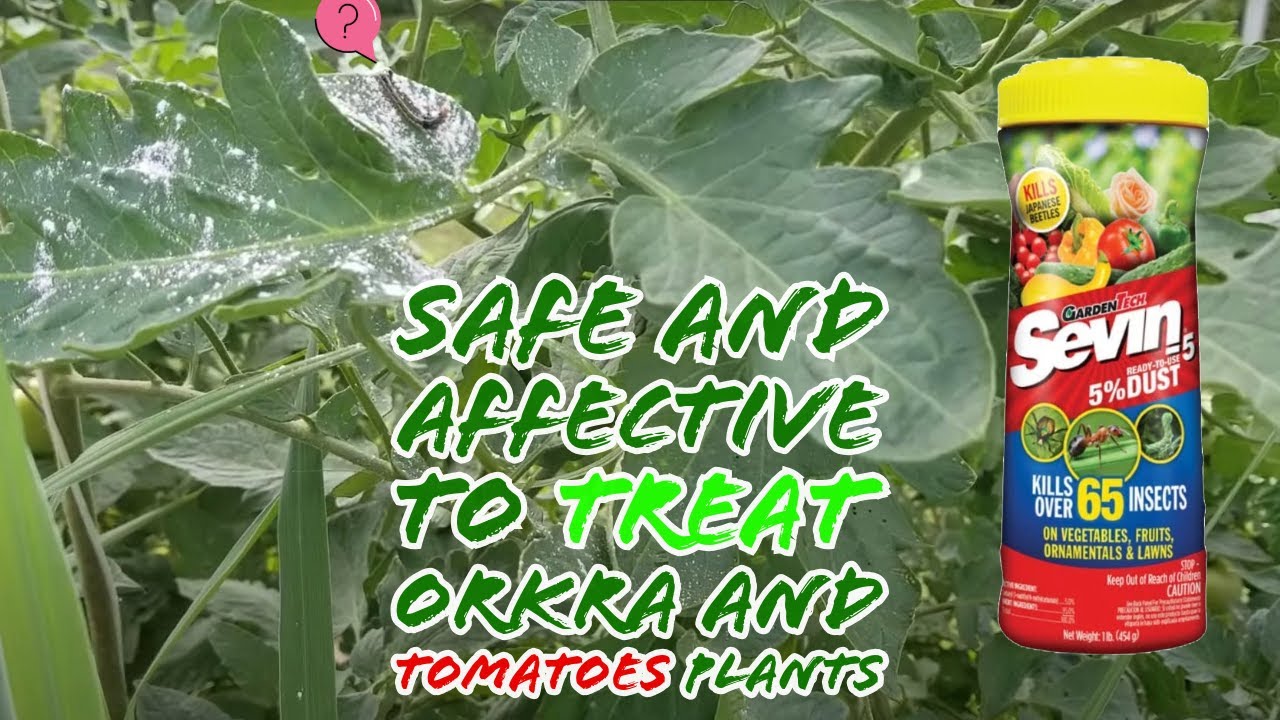To apply Sevin Dust to tomato plants, wear protective gear and shake the container to loosen the dust. Lightly dust the foliage and soil around the base of the plants, avoiding direct contact with flowers.
Tomato plants are susceptible to various pests that can hinder growth and yield. Sevin Dust is an effective insecticide that targets common threats like aphids, spider mites, and whiteflies. Proper application ensures maximum protection without harming beneficial insects. Understanding how to use this product safely and effectively is crucial for maintaining healthy tomato plants.

Credit: www.gardentech.com
This guide will walk you through the steps for applying Sevin Dust, ensuring your garden thrives while minimizing pest damage. Enjoy a bountiful harvest by taking proactive pest control measures!
How to Apply Sevin Dust to Tomato Plants: A Step-by-Step Guide
Introduction To Sevin Dust And Tomato Plants
Sevin Dust is a popular choice for protecting tomato plants. It fights off pests that harm your plants. Many gardeners use it to keep their crops healthy.
Tomatoes need protection from insects like aphids and hornworms. These pests can damage leaves and fruit. Using Sevin Dust helps keep them away.
Applying Sevin Dust is easy. Just follow the instructions on the package. Always wear gloves and a mask for safety.
Regular application can ensure your tomato plants stay strong. Healthy plants produce more fruit. This is why many choose Sevin Dust for their gardens.
Preparation Before Application
Start by closely examining your tomato plants. Look for signs of pests like holes or wilting leaves. Identifying the specific pests will help choose the right treatment.
Next, check the weather conditions. Apply Sevin Dust on a dry day with no rain forecasted for at least 24 hours. Avoid windy days to prevent dust from blowing away.
The temperature should be mild, ideally between 60°F and 85°F. Avoid applying during extreme heat or cold. This ensures better effectiveness of the treatment.
Understanding Sevin Dust Formulations
Sevin Dust comes in different formulations. Each type serves a unique purpose. Understanding these helps in choosing the right product for your tomato plants.
| Product Type | Description |
|---|---|
| Sevin Granules | Ideal for soil application. It targets pests at the ground level. |
| Sevin Powder | Best for direct application on leaves. It kills pests on contact. |
| Sevin Ready-to-Use Spray | Convenient option for quick application. Great for immediate pest problems. |
Choosing the right product is essential. Consider the specific pests affecting your tomatoes. Always read the label instructions for safe usage.
Protective Gear And Safety Measures
Using personal protective equipment (PPE) is essential for safety. Wear gloves, goggles, and a mask. These items help keep you safe from dust and chemicals.
Choose a well-ventilated area for application. Avoid windy conditions to prevent drift. Apply Sevin Dust in the early morning or late evening for best results.
| Protective Gear | Purpose |
|---|---|
| Gloves | Protect hands from chemicals |
| Goggles | Protect eyes from dust |
| Mask | Prevent inhalation of particles |
Consider environmental impact when using Sevin Dust. Avoid applying near water sources. Protect beneficial insects by applying only on affected plants.
Mixing And Application Techniques
For effective use of Sevin Dust, mixing it properly is crucial. The right mixing ratio is typically one cup of Sevin Dust to one gallon of water. This mix ensures that the dust adheres well to the plants.
Applying the dust can be done using a handheld duster or a spray bottle. Make sure to cover the entire plant, including the undersides of leaves. Dusting in the early morning or late afternoon helps avoid burning the plants.
| Effective Dusting Methods | Description |
|---|---|
| Handheld Duster | Easy to control and apply directly to plants. |
| Spray Bottle | Great for small areas, provides even coverage. |

Credit: m.youtube.com
Timing And Frequency Of Application
Apply Sevin Dust to tomato plants in the early morning or late afternoon. These times help avoid sunburn and ensure better effectiveness. Apply on dry leaves for better adherence.
For best results, repeat applications every 7 to 10 days. Check plants regularly for pests. If you see signs of infestation, apply Sevin Dust immediately.
| Best Times | Application Frequency |
|---|---|
| Early Morning | Every 7-10 Days |
| Late Afternoon | After Rain or Watering |
Aftercare And Monitoring
After applying Sevin Dust to your tomato plants, care is essential. Water the plants gently to help the dust stick. Avoid heavy rain for at least 48 hours after application. This ensures the dust remains effective against pests.
Keep an eye on the plants for any signs of pest activity. Look for holes in leaves or any insects. Check plants every few days. If pests return, reapply Sevin Dust as needed. Always follow the instructions on the label for safe use.
Common Mistakes To Avoid
Overapplication of Sevin Dust can harm tomato plants. It may burn the leaves and reduce yield. Always follow the recommended dosage on the label. Using too much can lead to plant stress.
Ignoring weather conditions is another common mistake. Apply Sevin Dust on a calm day. Wind can carry the dust away from the target area. Rain can wash it off before it works. Timing is crucial for effective pest control.
Alternatives To Sevin Dust
Many gardeners seek organic pest control options for tomato plants. These methods are safer for the environment and beneficial insects.
- Neem oil: This oil disrupts pests’ life cycles.
- Diatomaceous earth: This natural powder kills soft-bodied insects.
- Garlic spray: A strong scent that repels various pests.
- Insecticidal soap: A simple mix that targets pests on contact.
- Companion planting: Use plants that deter pests, like marigolds.
Choose these options for effective pest control without harmful chemicals. A healthy garden thrives with natural solutions.
| Organic Option | Benefits |
|---|---|
| Neem Oil | Safe for plants and pollinators |
| Diatomaceous Earth | Non-toxic and easy to apply |
| Garlic Spray | Repels a variety of pests |
| Insecticidal Soap | Effective against soft-bodied insects |
| Companion Planting | Enhances garden biodiversity |

Credit: www.gardentech.com
Faqs About Sevin Dust On Tomato Plants
Using Sevin Dust on tomato plants raises some health and safety concerns. Always read the label for proper usage. Wear gloves and a mask to avoid contact with skin and inhalation.
Keep pets and children away from treated areas. Wash hands thoroughly after applying Sevin Dust. Store the product in a safe place, away from food and out of reach of kids.
As for effectiveness, Sevin Dust targets common pests like aphids and spider mites. Its resistance varies among different insects. Some pests may develop resistance over time.
Regular monitoring of plants is important. Rotate insecticides to prevent resistance buildup. Always follow the recommended application rates for best results.
Frequently Asked Questions
How Often Should I Apply Sevin Dust?
You should apply Sevin Dust every 7 to 10 days, especially during the growing season. Frequent applications help control pests effectively. Always reapply after rain or heavy watering to ensure consistent protection for your tomato plants.
Is Sevin Dust Safe For Tomato Plants?
Yes, Sevin Dust is safe for tomato plants when used correctly. It targets specific pests without harming the plants. However, always follow the manufacturer’s instructions for safe application to minimize any risk.
When Is The Best Time To Apply Sevin Dust?
The best time to apply Sevin Dust is early in the morning or late in the afternoon. This timing helps reduce exposure to beneficial insects and minimizes evaporation. Ensure that the plants are dry for optimal adherence and effectiveness.
Can I Eat Tomatoes After Using Sevin Dust?
Yes, you can eat tomatoes after using Sevin Dust, but you should wait for at least three days. This waiting period allows the chemical to dissipate, ensuring safer consumption. Always wash your tomatoes thoroughly before eating.
Conclusion
Applying Sevin Dust to your tomato plants can protect them from pests effectively. Follow the steps outlined for safe and efficient application. Regular monitoring of your plants will ensure a healthy crop. Enjoy the fruits of your labor with thriving, pest-free tomatoes.
Happy gardening!

